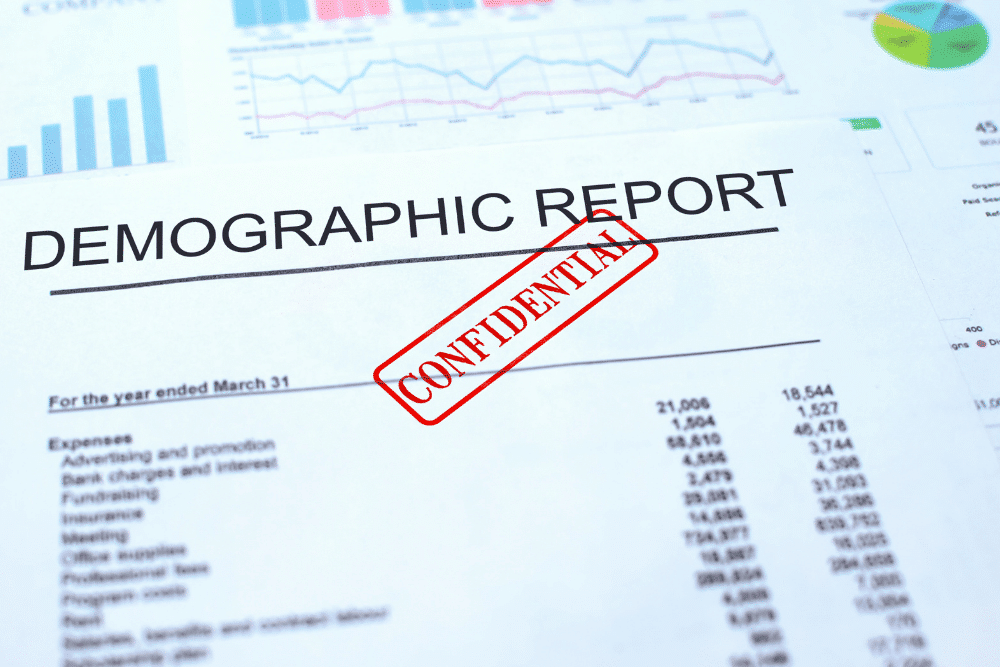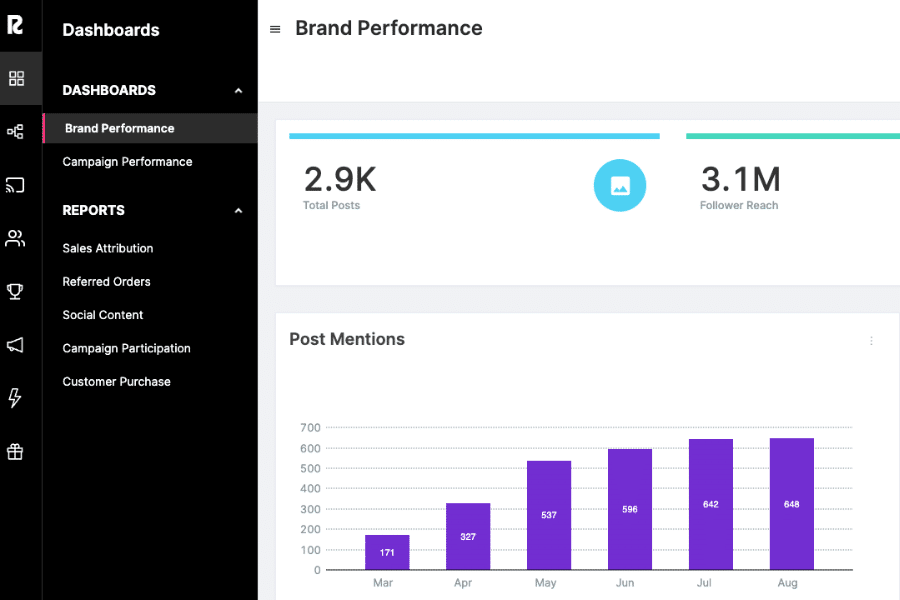
Breaking Down Influencer Marketing, Data and Privacy
In today’s information age, data is a precious commodity for businesses and brands of all sorts. Influencer marketing is built on data because it gives brands the information they need to find and connect with the right content creators and opinion leaders for their marketing efforts. But as concerns about user privacy and data security grow, influencer marketers must rethink how they collect first-party data, use consumer information, and leverage third-party data.
The distinction between first party and third-party data is an important one in influencer marketing.
What is first party data?
The term “first party data” refers to information that a company has gathered and keeps under its own control. There are many ways to collect information, such as using website analytics, surveying customers, and keeping track of what people buy in stores. This information is highly prized for its accuracy and reliability because it comes straight from the client.
What is third party data?
Third-party data is collected and owned by another company. It often comes from outside sources like social media sites, data providers, or brokers. Most people trust it less than first party data because it might not be as accurate and might not have the most up-to-date information.

Pros and cons
To a certain extent, first party data can outperform data from a third party. First of all, it’s more accurate and trustworthy because the information comes directly from actual customers. It also helps companies gain valuable insights into customers’ habits, preferences, and needs. In some cases, collecting first party data can be expensive and time-consuming, and it may not provide the breadth of data that third-party data can offer.
On the other hand, third-party data can be a valuable resource for brands looking to expand their reach and find new customers. However, the rise of privacy concerns and regulations, such as GDPR and CCPA in recent years, has made it more difficult for brands to collect and use third-party data in their marketing efforts. Recent changes to social networks like Facebook and Instagram have also made it harder for third parties to get information from them.
Data and influencer management platforms
Marketers rely heavily on data and would struggle to function without it. In influencer marketing, data is critical. For instance, influencer management platforms use data to find influencers, learn about their audiences, improve strategies, and measure ROI.
First party data
Influencer management platforms use first party data in a variety of ways. The following are influencer marketers’ seven most popular ways to use first party data.
Targeting demographics
Data points such as age, gender, location, and interests, are used by influencer platforms to find and target specific demographics. Brands can design marketing campaigns and initiatives that feature influencers who are popular with the same people they want to reach. When this data is collected as first party data it is often much more reliable and accurate.

Identify trends
Influencer platforms can find the latest content formats, popular topics, and new faces in the industry by looking at their first party data. So, brands can stay ahead of the curve and capitalize on trends to drive better results.
Find brand ambassadors
Companies can use their first party data to identify potential brand ambassadors. For example, they can look for customers who have made multiple purchases, have a high lifetime value, and frequently engage with the brand on social media. These customers are likely to be passionate about the brand and may be willing to serve as ambassadors. Companies can also use survey data and customer feedback to find customers who have had good experiences with their brand and may be willing to talk about it.
Personalize communication
By leveraging first party data, influencer software can personalize communication. With this data, brands can better understand their influencers’ preferences, needs, and performance, helping them build stronger influencer relationships and get the best results possible.
Automate management
With first party data, software can automate aspects of influencer management. Platform software can trigger welcome campaigns, generate unique discount codes, detect when campaigns are complete, process payments, and monitor performance. With automation, brands can simplify workflows and focus on the most critical things.
Measure performance
Platforms can use first party data to track and measure the performance of campaigns, including metrics like engagement rates, reach, and conversions. Brands can improve their marketing by determining which campaigns work best and changing their strategy based on this information.
Benchmark performance
Influencer platforms use first party data to compare the performance of campaigns, influencers, and audiences across different platforms, channels, and time frames. Benchmarking is valuable for brands because it shows how their influencers and campaigns compare to industry norms. It also enables them to make more informed and data-driven decisions.
Third party data
Influencer management platforms leverage third-party data to achieve a variety of objectives.
Discover influencers
Influencer marketing platforms use data to help companies discover new influencers. Usually, this includes an influencer’s reach, engagement rate, audience demographics, and influence history. Companies may be able to see the campaigns influencers have been a part of in the past and how much they cost. Also, brands can figure out which influencers will most likely connect with the people they want to reach.

Audience Insights
Third-party data providers offer demographic information, shopping habits, and online behaviors for massive groups of people. The insights help companies better understand target audience preferences and habits. Marketers can make campaigns for their target audience and find the best influencer for that audience.
Identify key trends
Influencer platforms incorporating third-party data may more fully recognize trends in the industry. For example, platforms can track and analyze social media data, such as hashtags, keywords, and mentions, to identify trending topics and popular influencers in a particular niche or industry.
Hashtag tracking
Platforms can find trending topics and the influencers leading the conversation by keeping track of specific hashtags and keywords related to a product, service, or industry.
Mentions tracking
By tracking the mentions of a brand, product, or service on social media, platforms can uncover the public’s perception and the way they talk about it.
Audience analysis
Influencer platforms can break down the demographics, locations, preferences, and behaviors of influencers and their followers by using information from outside sources. Doing this helps brands see who engages with their content and what topics resonate with the audience.
Measure campaigns performance
All influencer management software uses data from third parties to measure how well a campaign is doing and how well a strategy is working. They track metrics such as engagement rates, reach, and conversions. This helps brands see which campaigns are most successful and adjust accordingly. Also, platforms pull data from other sources to evaluate the financial impact of campaigns and measure the return on investment (ROI).
Measure influencer performance
Platforms can use third-party data to track the performance of individual influencers. While some systems are more robust, metrics like engagement rates, reach, and conversions are table stakes.
Engagement rate – measures the level of engagement an influencer’s content generates, such as likes, comments, shares, and click-throughs. A high engagement rate indicates that the influencer’s content resonates with their audience.
Reach – determines the size of an influencer’s audience, including the number of followers, views, and impressions their content generates. A high reach indicates that the influencer has the potential to reach a large number of people.
Conversion rate – details the percentage of people who take a desired action, such as visiting a website or making a purchase, resulting from an influencer’s content. A high conversion rate shows that the influencer’s content leads to sales or other actions that people want to take.
ROI – calculates the campaign’s return on investment by measuring the campaign’s financial impact in terms of sales attribution and revenue.
Audience demographics – give brands a pulse on who is engaging with influencer content. Information about the ages, gender, and locations helps companies know what type of content is resonating.
Data Risks for influencer management platforms
With more and more brands using influencer management platforms, using both first party and third-party data comes with both worries and risks. Specifically, there are concerns about data privacy, security, accuracy, and reliability. Additionally, there are risks associated with the potential misuse of data, such as data breaches, identity theft, and unauthorized access to personal information.
Data Quality
First-party data quality involves the data that influencer marketers directly collect from their customers. This data can include customer preferences, demographics, and behaviors. The risk of relying on this data is that it may not accurately reflect the ideal customer audience. If influencer marketers rely too heavily on this type of data, they may miss valuable insights from other sources.
Third-party data quality involves the data that influencer marketers obtain from outside sources. The sources often include social media platforms, influencer networks, and data aggregators. The risk of relying on third-party data is that it may not be reliable or up-to-date. Additionally, third-party data is often more expensive than first-party data, making it difficult to measure the return on investment.
A marketer must ensure that the data collected and used to evaluate influencer marketing campaigns is accurate. A marketer must make sure that the data collected and used to evaluate influencer marketing campaigns is correct. Potential risks of data accuracy include:
- Data collection errors
- Incorrect tracking of influencer performance
- A lack of insight into the impact of the influencer’s content
The third-party data provider, like a social media analytics platform, is in charge of making sure that the third-party data is correct. Potential risks of third-party data accuracy include inaccurate data due to data collection errors and incorrect tracking of influencer performance. Additionally, data privacy laws, such as GDPR or CCPA, can affect the accuracy of third-party data or changes to social media algorithms that could affect the accuracy of the data provided.

Data Privacy
Data privacy is an essential factor to consider when managing influencers on any platform. Information Data collected directly from the platform, should be governed by data privacy laws to keep the influencer’s personal information safe and secure. For example, here is Roster’s privacy policy.
Third-party data, or data that comes from sources outside of the platform, is also subject to privacy rules to protect the platform from fines or damage to its reputation.
All data collected, stored, and used must be done in a manner that complies with data privacy regulations to ensure the platform is operating within the law.
Data Security
Data security is a priority for influencer marketing platforms. First-party data comes directly from the influencer and customers, while third-party data is collected from sources such as social media accounts and e-commerce platforms.
To ensure the security of both types of data, influencer marketing platforms should employ appropriate security measures, such as encryption, authentication, access control, data loss prevention, and incident management. Marketing platforms should also keep data private and follow applicable laws. Lastly, influencer marketing platforms should have a full data security audit process so that any security risks can be quickly found and fixed.
Platforms must ensure that all data is protected from unauthorized access, use, and disclosure, as a data breach can result in serious reputational damage and financial loss. Influencer management platforms need to publicly share their data security policies, like Roster’s EU and CCPA Date Processing Agreement.
Summary
Brands that use influencer marketing software that relies heavily on third-party data collection may be vulnerable to potential risks. As the rules and regulations of social media networks continue to change, access to data from third parties is likely to remain limited. And it will become hard for brands to identify and connect with the right influencers for their campaigns.
One way to deal with this problem is to put more effort into building first-party data sets that give more accurate and trustworthy information about their influencers. Brands can do this by collecting purchasing data, through customer surveys, interviews, and other forms of direct customer engagement. By tracking conversions and other key metrics, brands can also see the influencers who drive the most valuable results.
Another alternative is to consider brand ambassador marketing programs. The strategy focuses on finding passionate, loyal customers or followers and getting them involved as brand advocates. Programs help build real, long-lasting relationships with customers and pave the way for growth that can be sustained.
In the end, brands need to adapt as restrictions on third-party data in influencer marketing get tighter. Brands can still connect with the right influencers and reach their marketing goals while still following the new rules and policies in the industry. They can do this by focusing on building first-party data sets and thinking about alternative approaches like ambassador marketing. This way, brands can ensure that their influencer programs remain effective and sustainable for the long term.
Other articles from James Davies, Roster’s co-founder and Chief Technology Officer include The Tech Side of Influencer Marketing Software.




